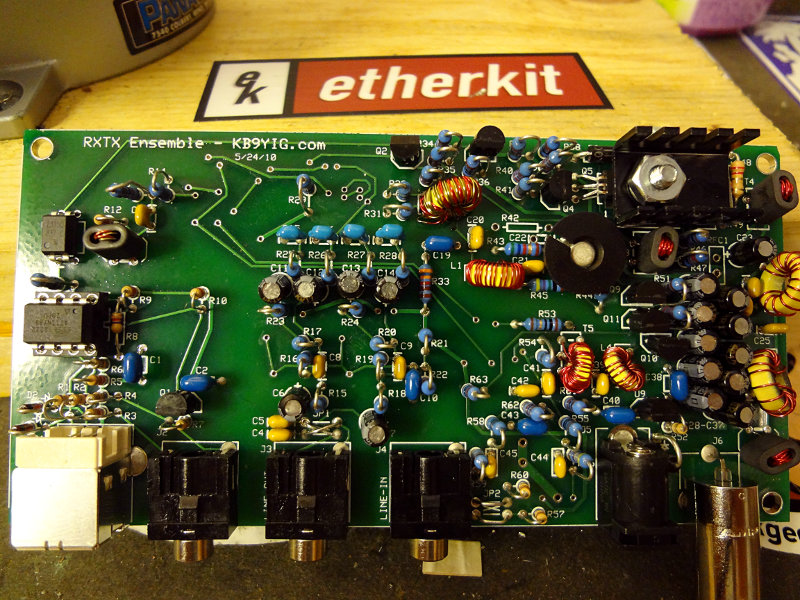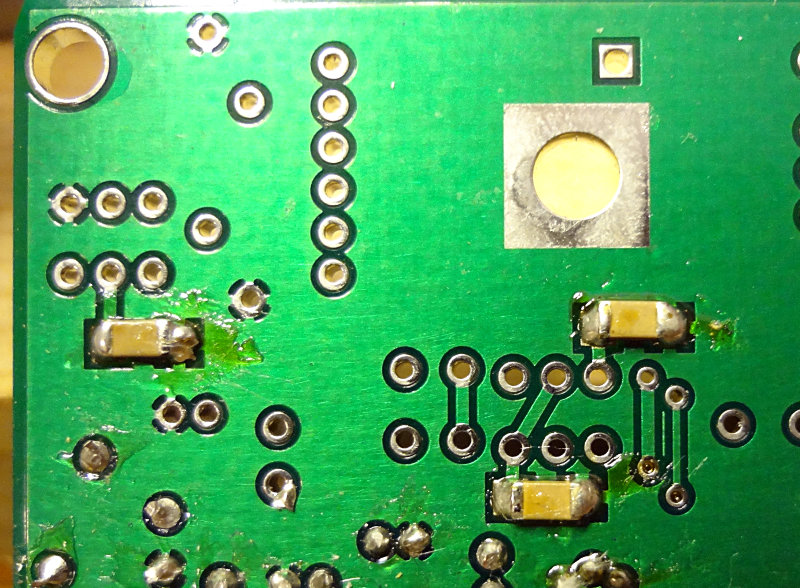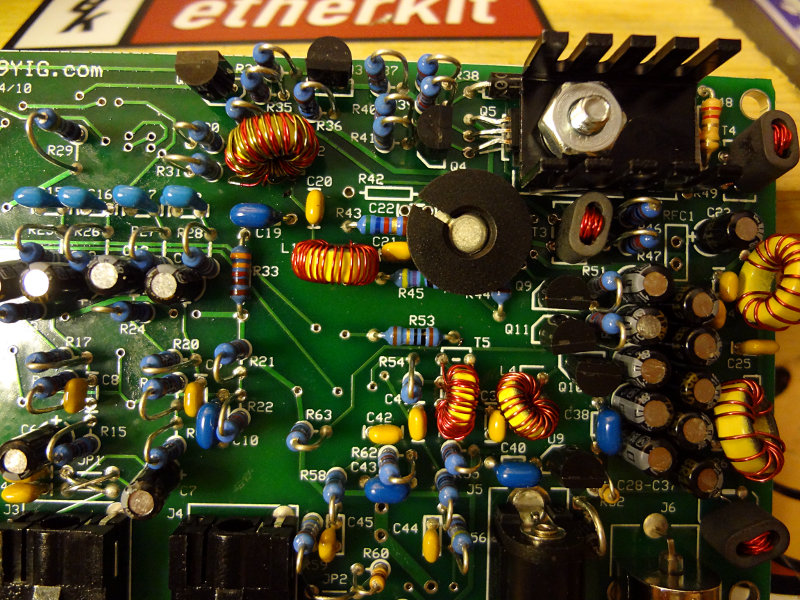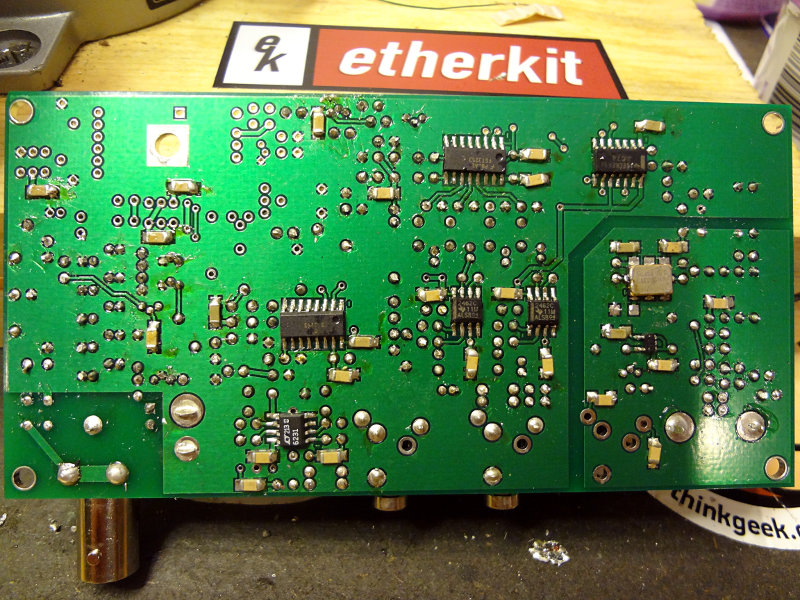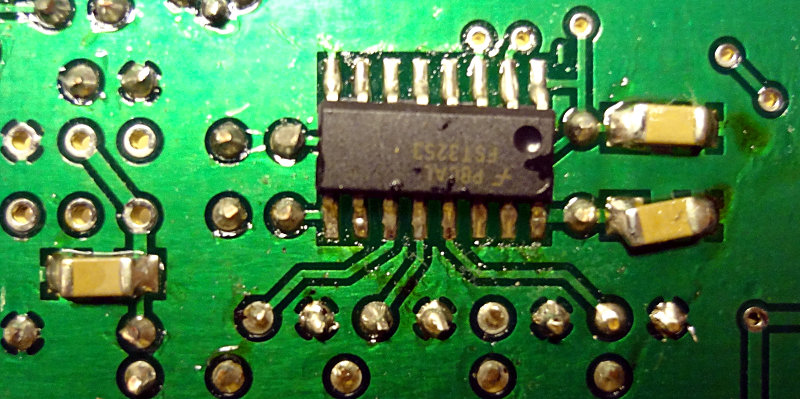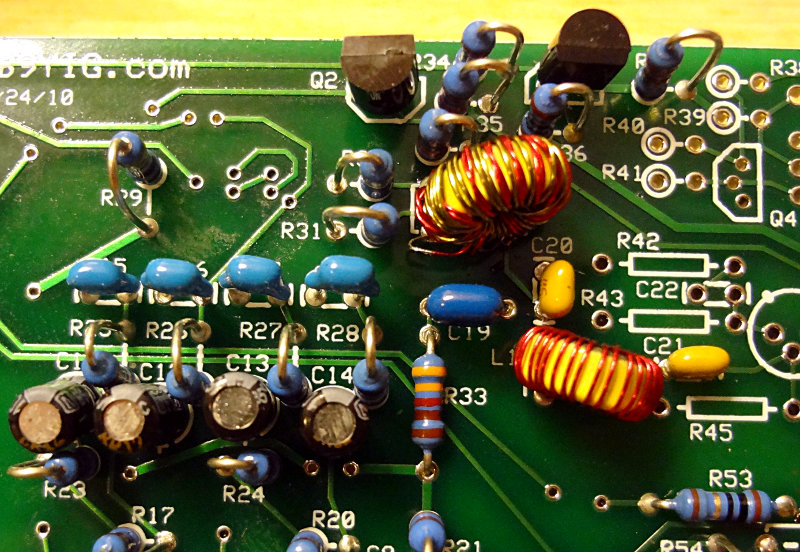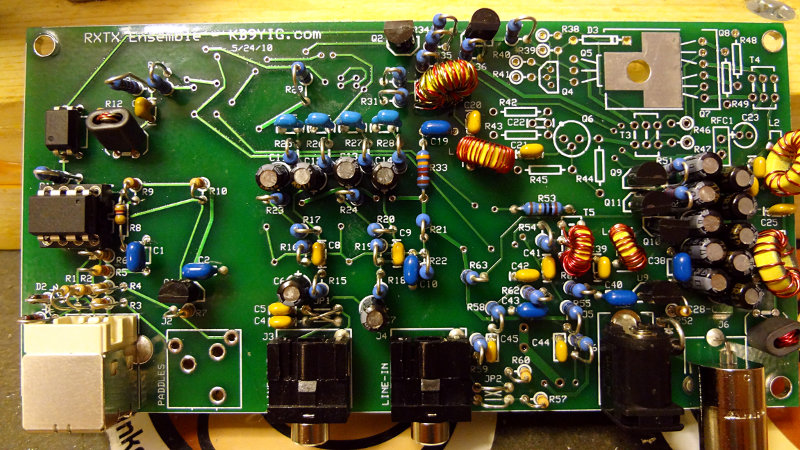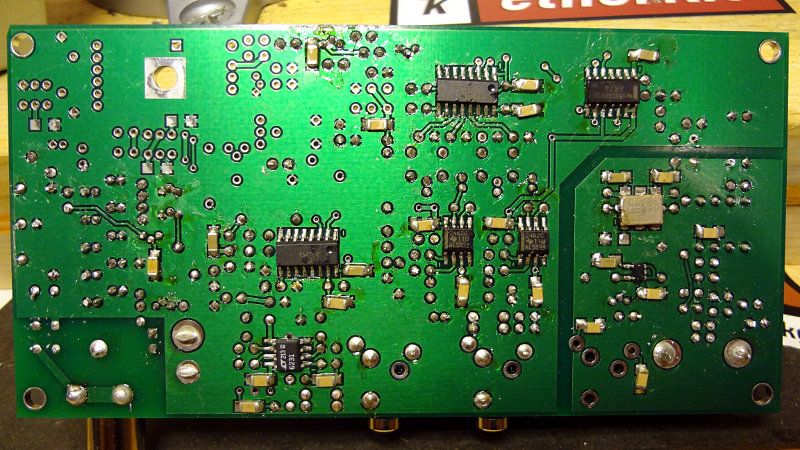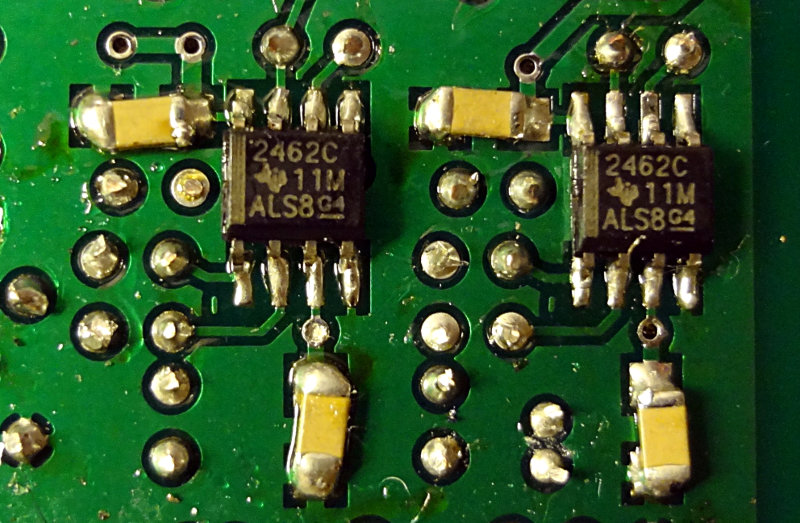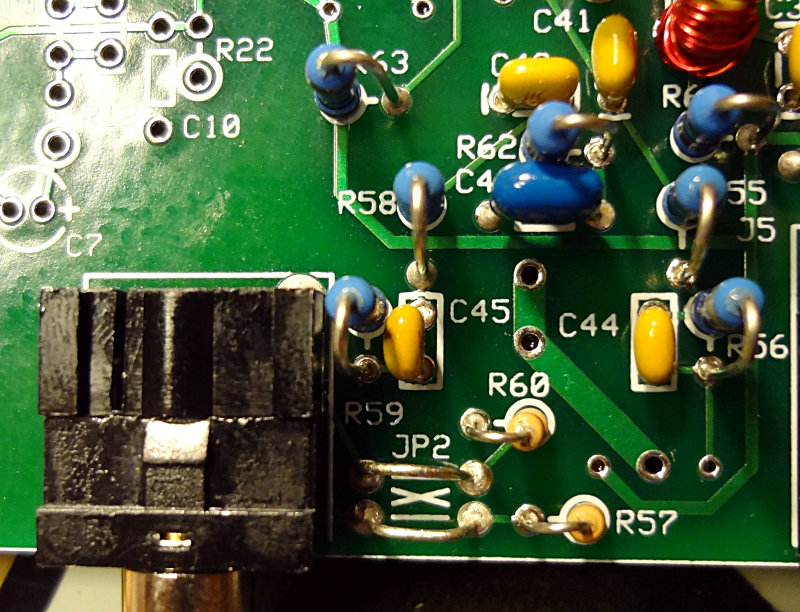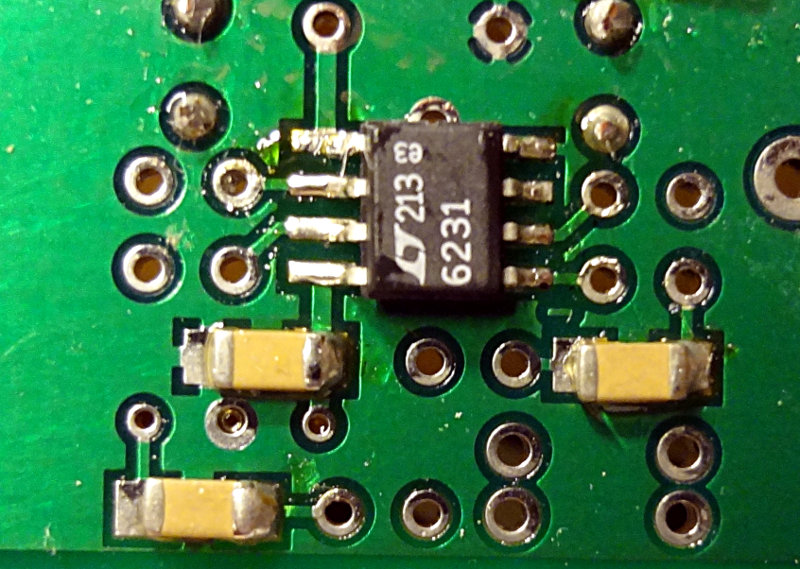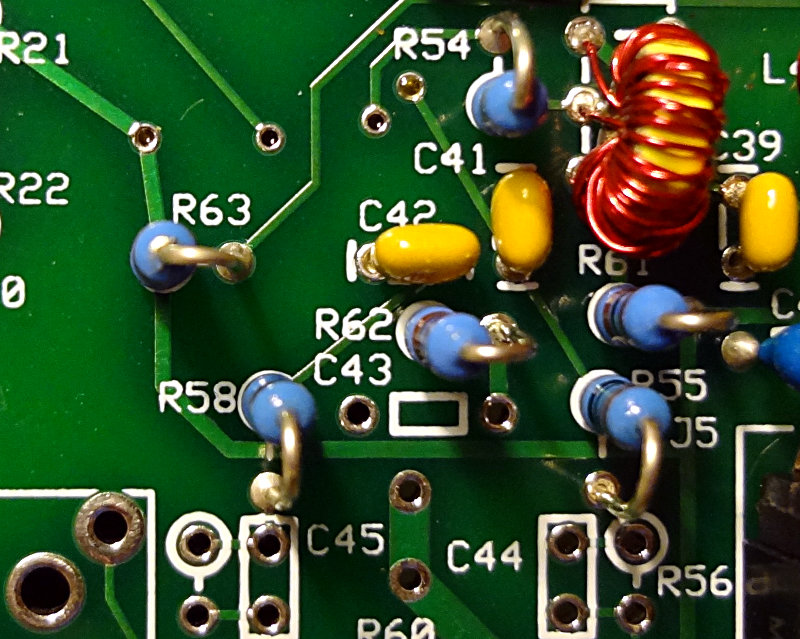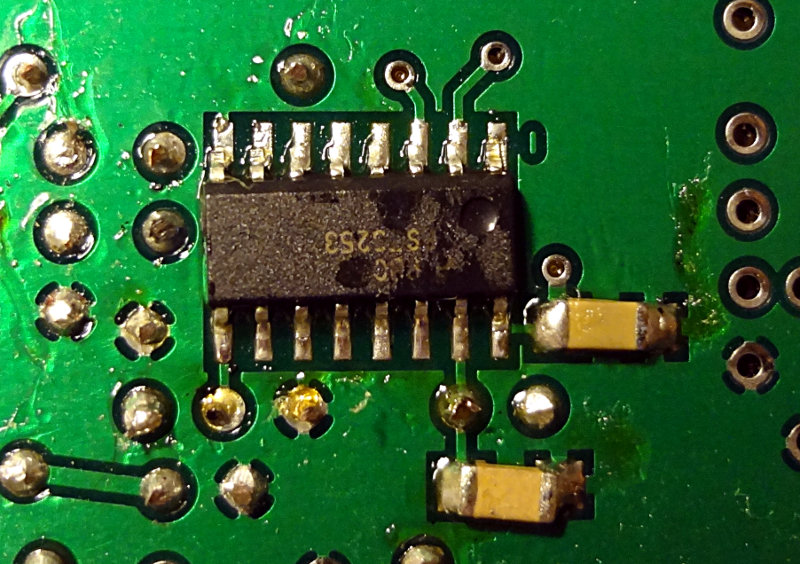The driver/PA section is the final section of the build.
Three capacitors are the final SMD components left to solder onto the back of the board.
Two binocular core transformers are part of this section. You might be tempted to do these last, but I suggest making them the first components to install. The top of the board is starting to get pretty crowded at this point and you’ll want a bit of room to thread the wires for the transformers through the holes. Same for the RF choke (RFC1, which I noticed I inadvertently left out).
The transformers themselves can be tough to wind. Make sure you pull each wire tightly through the hole or you’ll have a hard time fitting all the windings in.
The three BS170 FETs get covered up by a heatsink and pad. The 2N2222 transistor also gets a heatsink treatment. There are a few components that get partially covered up by the heatsinks, so make the FETs and 2N2222 the last parts you work on.
Everything else is pretty simple and should go together without any issues.
The top and bottom of the (practically) completed board.
